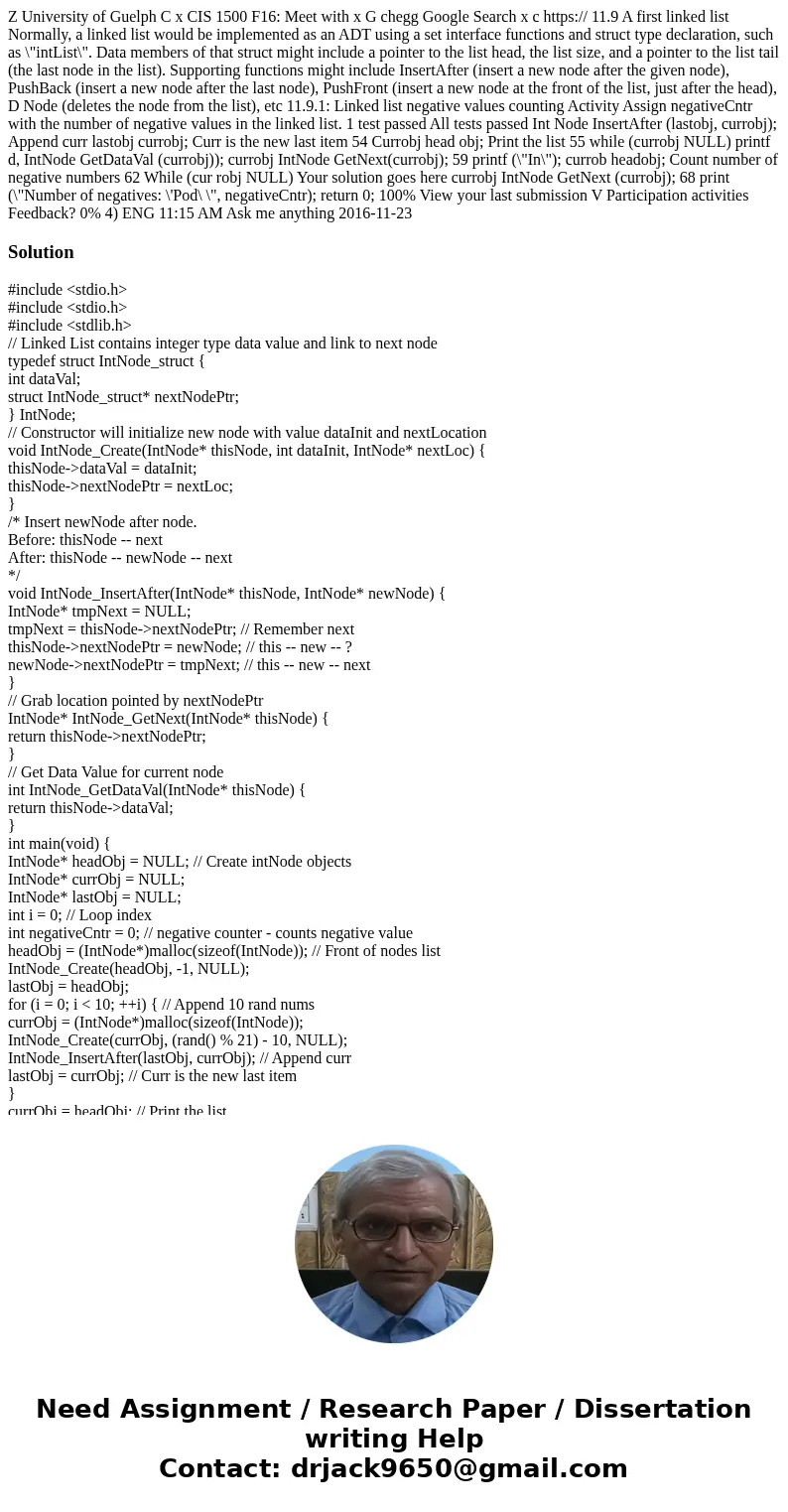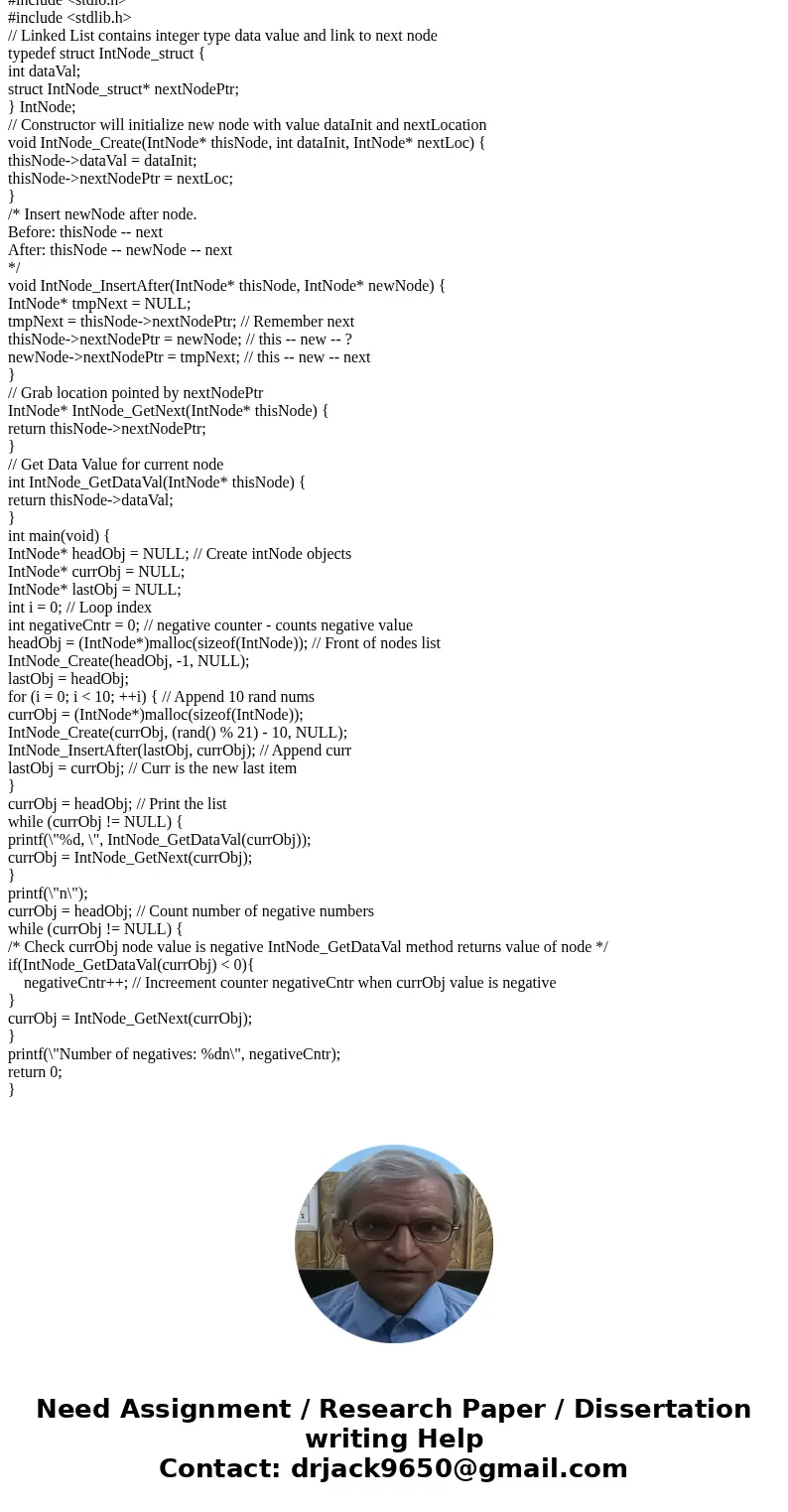Z University of Guelph C x CIS 1500 F16 Meet with x G chegg
Solution
#include <stdio.h>
#include <stdio.h>
#include <stdlib.h>
// Linked List contains integer type data value and link to next node
typedef struct IntNode_struct {
int dataVal;
struct IntNode_struct* nextNodePtr;
} IntNode;
// Constructor will initialize new node with value dataInit and nextLocation
void IntNode_Create(IntNode* thisNode, int dataInit, IntNode* nextLoc) {
thisNode->dataVal = dataInit;
thisNode->nextNodePtr = nextLoc;
}
/* Insert newNode after node.
Before: thisNode -- next
After: thisNode -- newNode -- next
*/
void IntNode_InsertAfter(IntNode* thisNode, IntNode* newNode) {
IntNode* tmpNext = NULL;
tmpNext = thisNode->nextNodePtr; // Remember next
thisNode->nextNodePtr = newNode; // this -- new -- ?
newNode->nextNodePtr = tmpNext; // this -- new -- next
}
// Grab location pointed by nextNodePtr
IntNode* IntNode_GetNext(IntNode* thisNode) {
return thisNode->nextNodePtr;
}
// Get Data Value for current node
int IntNode_GetDataVal(IntNode* thisNode) {
return thisNode->dataVal;
}
int main(void) {
IntNode* headObj = NULL; // Create intNode objects
IntNode* currObj = NULL;
IntNode* lastObj = NULL;
int i = 0; // Loop index
int negativeCntr = 0; // negative counter - counts negative value
headObj = (IntNode*)malloc(sizeof(IntNode)); // Front of nodes list
IntNode_Create(headObj, -1, NULL);
lastObj = headObj;
for (i = 0; i < 10; ++i) { // Append 10 rand nums
currObj = (IntNode*)malloc(sizeof(IntNode));
IntNode_Create(currObj, (rand() % 21) - 10, NULL);
IntNode_InsertAfter(lastObj, currObj); // Append curr
lastObj = currObj; // Curr is the new last item
}
currObj = headObj; // Print the list
while (currObj != NULL) {
printf(\"%d, \", IntNode_GetDataVal(currObj));
currObj = IntNode_GetNext(currObj);
}
printf(\"n\");
currObj = headObj; // Count number of negative numbers
while (currObj != NULL) {
/* Check currObj node value is negative IntNode_GetDataVal method returns value of node */
if(IntNode_GetDataVal(currObj) < 0){
negativeCntr++; // Increement counter negativeCntr when currObj value is negative
}
currObj = IntNode_GetNext(currObj);
}
printf(\"Number of negatives: %dn\", negativeCntr);
return 0;
}


 Homework Sourse
Homework Sourse